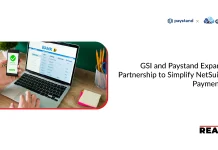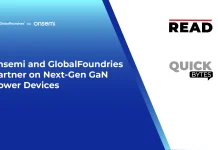To add to the complexity of hybrid-remote work, firms are experiencing the great resignation, as millions have left their jobs in 2021. Combined with generation Z entering the workforce and bringing a fresh perspective, the current shifts are forcing employers to rethink how they are attracting, engaging and retaining employees.
2021 was the year during which hybrid working became standard practice, with the pandemic forcing businesses to digitally transform their workflows at an unprecedented speed. By the time restrictions were tentatively lifted earlier in the year, businesses were capable of achieving the same level of productivity both in and outside of the office, and the transition to hybrid work presented itself as the natural progression.
While many organisations chose to resist the trend, the future of work has since been a hot topic, with companies recognising that constant innovation in the field will be key to business success moving forward.
Here are some predictions on how 2022 will continue to push boundaries in concept of office, and how companies are setting themselves up to ride the momentous wave of further innovation.
Hybrid mix of in-office and at-home work will require a whole new software stack
Home offices will be preferred for desk work while corporate offices will be kept to create a sense of belonging and company culture – however these offices alone will not be enough to motivate and retain staff. Many employees, including those who accept jobs mainly due to long-term job fluctuations, will find that long-term shortage of co-workers can lead to Zoom fatigue, and long-term can lead to company termination and exhaustion. Many companies will provide integrated remote service policies and pay for office space designed for activities to build interpersonal relationships.
Software automation will increasingly power everything
The past two years have accelerated social acceptance and adoption of automation in all walks of life. From timekeeping to purchasing to logistics and delivery, layoffs and staff shortages have made automated technology a necessity and not just a fantasy for the future. Starting with investing in RPA for many years, the enterprise continues to look for ways to empower these sectors.
Employers will focus on improving employee productivity and wellbeing
Companies are pursuing investment in solutions that improve employee productivity and overall wellbeing (during and after working hours) in the hybrid work culture. Companies that are fully and partially deployed should closely monitor employee NPS (eNPS), take steps to build a strong corporate culture and create a sense of belonging. Ordinary off-site companies and mental health benefits will be the key to retention and productivity.
Employees’ desire to work for organizations whose values align with their own will be an important criterion in selecting a new employer. As the talent marketplace continues to heat up, new hires expect their company to become actively involved and vocal about the cultural debates of the moment.
HR data infrastructure layers will transform workforce development
The future of job platforms is only in their first inning of data-integration with a massive opportunity ahead for data infrastructure to transform workforce development. Large enterprises today are crushed under mountains of HR data. Most future of jobs platforms lack a real-time, dynamic, data infrastructure layer that can assess current labor and workforce data, but in addition and perhaps more importantly, lack the ability to predict labor market needs in five, ten and 50 years.
It is expected to see more companies allocating budget to building this data engine, in order to better estimate where and how to best reskill employees in the on-going war for talent. To do this, companies will shift from using expensive, manual consultants to leverage modern data infrastructure solutions that automatically connect and integrate data. Many enterprises are still in the early stages of thinking through this next wave of data integration and critical transformation.
Future of work software will increasingly be built to facilitate human connection
In the past decade, future of work was all about helping people do more things, easier and faster. Now the challenge will be to bring back the human connections that have been lost along the way.




